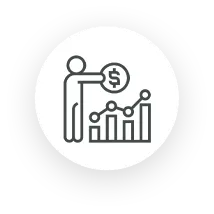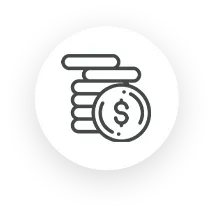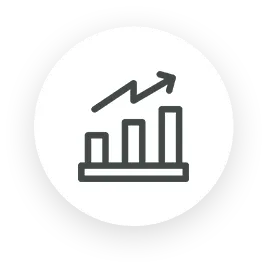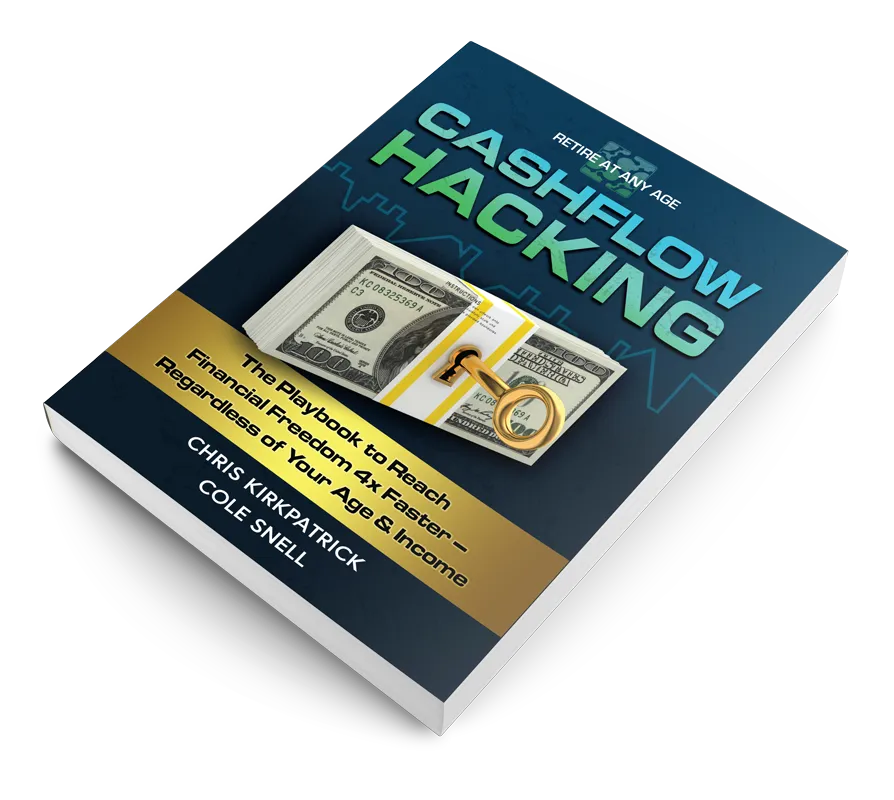
Simplifying Financial Confusion
LEARN CASH FLOW HACKING TO REACH FINANCIAL FREEDOM
Used by 90% of millionaires to reach their financial goals 4x faster

Achieve Financial Freedom Through Cash Flow Hacking

Increase Your Lifestyle While You Build Your Wealth

Position Yourself to Thrive in Market Downturn
YOU SHOULD NOT FEEL OUT OF CONTROL ABOUT YOUR FINANCIAL STRATEGY

Have easy access to your money in case of emergencies and opportunities

Use the investment strategy 90% of millionaires use

You deserve a clear plan to consistently grow your money and avoid market uncertainty

Have a guide and advisor that has your best interest in mind

Do not overpay in taxes

Stop guessing at the best vehicles to protect and grow your money

Three Steps to Create Wealth Investing for Cash Flow | Infinite Banking

LIFE180
Three Steps to Create Wealth Investing for Cash Flow | Infinite Banking
The current article is a written adaptation of the video available on the Life180 YouTube channel.
We're about to delve into the essential three steps to building wealth, and it's simpler than you might think. I'll be demystifying wealth-building concepts, stripping away all the unnecessary complexity, and presenting them in their most straightforward form. My goal is to cut through the noise and help you make sense of various financial principles.
What's unique about this approach is that it's designed for everyone, regardless of your level of financial sophistication. Whether you're well-versed in advanced financial strategies or struggling with bad credit, debt, and financial hardships, these principles are tailored to be applicable universally. By incorporating them into your life, you can streamline your financial journey, paving the way for faster and more tangible results. Whether you're aiming for financial sophistication or working your way out of debt, these principles can help you establish better habits and implement a more effective strategy.
One fundamental belief I hold strongly is that psychology is the driving force behind our finances, influencing not only our monetary decisions but also shaping our overall life. Understanding the psychological aspects that govern the choices we make with our money reveals that we might be caught in a repetitive cycle, essentially playing by someone else's rules. It's time to break free from this cycle and regain control over the outcomes in your life. Empower yourself by adopting a different set of rules that you have control over, allowing you to steer the results in your own life.
I firmly believe that your current position is a reflection of who you are, your actions, knowledge, and your overall approach to life. Recognizing this, it's important to acknowledge that you may not be the person you need to be in order to achieve your desired goals. Growth and personal development are essential, and I encourage you to stay engaged because the journey ahead promises to be both enlightening and enjoyable.
First Step: Save Money
The initial step in the journey toward wealth creation is as fundamental as it is crucial: saving money. While this might seem overly simplistic, let's delve into the concept to illuminate its significance. What I mean by saving money is essentially paying yourself first.
This straightforward yet often overlooked principle necessitates that, whenever you earn a dollar, the initial 10 to 20 cents of that dollar should be allocated to you before any other expenses. By "paying yourself," I mean directing this portion of your earnings towards your future, building a financial reserve that positions you to save effectively. This reserved money serves a dual purpose: it acts as a safety net for unexpected emergencies and, equally important, creates opportunities for future investments or endeavors.
Bear in mind, there's a multitude of factors at play in today's world, particularly within the ever-shifting economic landscape that lies beyond our sphere of influence. Uncertainties surrounding government decisions, fluctuations in inflation rates, and the unpredictable trajectory of taxes create an environment where forecasting the future becomes an intricate challenge.
Traditional financial planning, with its focus on market indices like the S&P, often falls short in addressing these complex concerns. Even though marketing may promise significant returns, the reality is that for the average person, the anticipated gains from these indices may not materialize.
Numerous studies and facts support this assertion, emphasizing that human behavior and psychology, be it from financial advisors or persons themselves, frequently disrupt long-term investment strategies. This unpredictability underscores the necessity for a more dynamic and adaptive approach to financial planning.
In essence, people are at the heart of the financial challenge we face. Saving money becomes a pivotal strategy, aiming not only to create a safety net for emergencies but also to seize opportunities. Properly saving money positions you to become a good investor, as it empowers you to make informed and strategic choices with your finances.
Position Yourself to be a Good Investor
What defines a good investor? Examining figures like Warren Buffet and Elon Musk, who have amassed considerable wealth through their investment prowess, reveals that while some may possess more talent or a keener eye for opportunities, a significant factor in their success lies in how they save and manage their money. The habits and behaviors they exhibit with their assets set them up to be successful investors.
Becoming a good investor hinges on the foundation established in the first step, solidifying your financial position through effective saving. Once this groundwork is laid, you're better equipped to move on to the second step in the process.
Second Step: Invest for Cash Flow
Now, as we transition to the investment phase, having successfully positioned ourselves for financial success, it's time to diverge from the conventional Wall Street approach. Instead of adhering to the mainstream recommendation of investing in mutual funds and ETFs, we'll focus on identifying cash flow assets.
This is one of the reasons why I favor real estate. In fact, it's a primary motivation behind the writing of my book, "Cash Flow Hacking." I strongly advocate for the concept that cash flow investing is the linchpin to achieving success. So, here's the concept: when we invest with a focus on generating cash flow, consider the next scenario.
Consider, for instance, an average American household earning $100,000 annually. Let's break it down. Approximately 25%, or $25,000, is allocated to Social Security, leaving the household with $75,000 per year for living expenses.
Now, accounting for the historical average inflation rate of 3% since the departure from the gold standard in 1971, we can use the rule of 72. Dividing 3% by 72 reveals that every 24 years, the value of money in this scenario is halved. So, 24 years from now, the $75,000 would require $150,000 just to sustain the current standard of living.
Extending this projection to 36 years, which is an additional 12 years (half of the initial 24-year period), we find that to maintain the same lifestyle, the household would need $225,000. This underscores the impact of inflation on the purchasing power of money over time.
The 4% Rule Doesn’t Work for Retirement Planning
Applying the 4% rule to the projected $225,000 needed for maintaining your standard of living in retirement, it reveals that you would require a retirement account totaling $5,625,000.
This substantial figure is aimed at ensuring that you can sustain your lifestyle without facing a downgrade in your retirement years. Now, consider the psychological aspect of this calculation. As I mentioned earlier, psychology plays a significant role in every decision we make in life, particularly when it comes to managing our finances.
A Financial Plan You Can Believe In
So, here's the crux of the matter: if you don't believe that reaching $5,625,000 is feasible, especially at a subconscious level, which is often the case, it's unlikely to materialize. Consider this - if your household income is $100,000, and let's say it's evenly split between partners at $50,000 each, you may never have witnessed an actual $100,000 in your bank account.
The prospect of reaching the $5 million mark required for a secure retirement might seem far-fetched and unattainable. The psychological barrier of not having experienced such wealth can hinder the belief in achieving such financial milestones.
Instead of fixating on the uphill climb to that $5,625,000 target, it's time for a shift in strategy. Acknowledge the inherent uncertainty in predicting the variables that will shape the financial landscape 36 years from now. Planning for such a distant future is challenging, especially considering the unpredictable events that have unfolded in the past 36 years, events that no one could have foreseen.
The economic shifts, monetary policies, and unprecedented events like stimulus measures are beyond our control. Recognizing this reality, it becomes evident that attempting to micromanage every detail of a financial plan for such a distant future may not be the most pragmatic approach.
Indeed, rather than fixating on a distant 36-year horizon, it's more practical to set our sights on numbers that are more immediate and manageable. By recalibrating our approach and focusing on achievable figures, we can better navigate our financial journey.
So, what does this mean in practical terms? Shifting our investment strategy toward Cash Flow allows us to move away from the pursuit of a colossal accumulation target. Instead, we can ask ourselves: "What do we need to sustain a lifestyle, given our current household income of $100,000 per year?" Breaking it down, this translates to $8,300 per month. This approach enables a more tangible and actionable financial plan, aligning with our immediate needs and goals.
As a family venturing into cash flow investments, $8,300 per month becomes a more relatable and believable figure. This is a sum that you can mentally grasp and have confidence in managing. It's an amount that you likely have handled successfully in the past, perhaps even equivalent to what you paid for a car or a similar significant expense.
Contrast this with the elusive $5 million-plus accumulation goal, a figure that may feel beyond reach because it's never been a part of your lived experience. Shifting focus to a more manageable monthly cash flow aligns with your real-world capabilities and builds a foundation for financial confidence.
The next step is to strategize how to reach that $8,300 monthly cash flow goal. Setting a realistic timeframe of 10 to 15 years allows for a practical approach. Investing for cash flow provides flexibility, allowing expectations to evolve as economic environments and inflation rates change.
Opting for assets like real estate can act as a safeguard against inflation, providing a stable foundation for planning around the $8,300 target. Real estate, being inherently inflation-protected in the long term, has the potential to naturally grow and meet your financial needs over time. This underscores one of the compelling reasons to consider real estate as a significant component of your investment portfolio. I firmly believe that everyone should have some exposure to real estate for its unique ability to offer stability and growth.
But here's the strategy: instead of fixating on achieving a specific monetary goal, let's kickstart the process by prioritizing savings. By diligently setting aside funds in the earlier steps, building an emergency fund and an opportunity fund, we've laid a solid financial foundation. Now, it's time to leverage that opportunity fund to make strategic investments geared toward generating cash flow.
Now, as we venture into investing for cash flow, the goal is to start small yet strategically. Our initial aim is to create a modest cash flow, say between $200 to $500 per month, with our first cash flow asset. This becomes our primary target, the pivotal step in chipping away at the larger $8,300 monthly goal.
What makes this approach powerful is the subsequent step: compounding cash flow. By reinvesting and compounding the returns from our initial cash flow, we set in motion a process that accelerates our progress over time. This compounding effect becomes a key driver in gradually reaching and surpassing our financial objectives.
Third Step: Compound Cash Flow
As we compound the initial cash flow of $200 to $500 per month in the first year, it's crucial not to spend it impulsively. Instead, we reinvest it into the system, save, and repeat the process. This disciplined approach allows us to build an opportunity fund for future investments. By year two, with a potential $800 per month, we continue the cycle of strategic reinvestment, steadily advancing towards our financial goals.
In year two, once you embark on this journey, I strongly advocate for the philosophy of "slow down to go fast." Taking the time to save rather than rushing for immediate, high returns allows for a more strategic and sustainable approach. Despite the temptation to join the frenzy of market activities, saving first may seem like a slower process.
However, this deliberate pace is akin to the tale of the tortoise and the hare. While others may sprint ahead initially, the disciplined saver, like the tortoise, steadily progresses. When market downturns and economic challenges inevitably occur, you remain resilient, steadily advancing toward your financial goals.
The tortoise and hare analogy becomes particularly apt as you approach year three. By this point, your cash flow has likely grown from $800 to $1,200 per month. The compounding effect of this steady growth becomes increasingly evident. Year by year, as you continue to reinvest and compound your cash flow, the increments become more substantial.
By the 10th to 12th year, you can expect to reach the significant milestone of achieving a monthly cash flow in the range of $8,300 to $10,000. This patient and strategic approach, akin to the tortoise's steady progress, positions you for long-term financial success.
The Financial System is Broken
The conventional narrative that advocates going to school, securing a job, working for four years, and diligently saving towards the elusive $5 million goal is, in my view, a misleading and flawed concept. I find it perplexing that many individuals buy into this narrative, akin to running on a hamster wheel, working tirelessly, and entrusting money managers with substantial fees.
This traditional approach often places the burden of risk on the individual's assets while the money managers continue to profit regardless of the outcomes, generating annuitized business and fostering cash flow for themselves.
It's essential to question and reconsider this narrative, recognizing the potential pitfalls and imbalances in the traditional financial model. Embracing a more strategic and independent approach, such as investing for cash flow and compounding, offers an alternative path that empowers individuals to take control of their financial destiny. This perspective challenges the status quo, urging people to question the traditional wisdom that may not necessarily lead to optimal financial outcomes.
In my perspective, the establishment of money management fees and fiduciary responsibilities represents one of the most significant scams in financial history. The existence of these fees introduces a massive conflict of interest concerning persons' personal finances, in my view.
While opinions may vary, I firmly believe that the compounding of cash flow through the three-step process, saving money, investing for cash flow, and then compounding that cash flow, offers a far more efficient and effective path to achieving one's financial goals. This approach, I contend, can propel individuals toward their desired outcomes much more rapidly than traditional fee-laden models.
Managing personal finances can be simplified by adopting the three-step approach: save money, invest for cash flow, and compound that cash flow. If you have questions or need guidance, comment below, and I'll do my best to assist. For more in-depth insights on implementing a cash flow plan, consider checking out my book, "Cash Flow Hacking."
Explore "Cash Flow Hacking" for just $8.95, covering the book cost while you handle shipping and handling. Alternatively, it's available on Amazon for $20. If you have additional queries or wish to delve deeper into setting up a cash flow investing strategy tailored to your life, schedule a call with one of our certified Life 180 coaches. They're ready to assist you.
So I hope that helps. I hope it makes sense, whether you wanna do real estate or you wanna invest it in your business, or you have some other way that you wanna implement a cash flow investment strategy, we can show you how to set up the foundation of it just by going down below and setting up a call.
That concludes it. Wishing you a blessed and inspirational day. Take care.
HOW TO START TAKING CONTROL OF YOUR FINANCES BY MAXIMIZING YOUR CASH FLOW AND PROTECTING YOUR ASSETS

1. Schedule Your Free Clarity Call

2. Create a Free Customized Plan

3. Get Guide to Financial Success
GET YOUR FREE COPY TO STOP USING OUTDATED RETIREMENT STRATEGIES
Cash Flow Hacking teaches you to:
Protect Your Investments
Thrive in bad markets
Reach financial freedom faster

ARE YOU LOOKING FOR:

Cash Flow Hacking teaches you to:
Security to protect your money
Increased cash flow and lifestyle
Inflation protection
Financial certainty in all economic environments
A reduction in taxes
Safe and fast access to your money with no penalties
WHO IS THIS PROGRAM FOR?

People looking for an alternative
Are you looking for alternatives to Wall Street’s “buy and hold” strategy that takes 40 years with uncertain results? Our Cash Flow Hacking strategies provide you the building blocks to get started on the right foot

Passionate Entrepreneurs
Are you looking for a financial strategy that will take your best assets (you and your businesses) and multiply their potential? Our Cash Flow hacking strategies will teach you how to invest for the future without sacrificing building your business

Real Estate
Investors
Are you a real estate investor who is burned out from being a landlord or playing the fix-and-flip game? Our Cash Flow Hacking strategies will provide you with the system to create predictable wealth AND give you the freedom you are looking for.
YOU DESERVE PEACE OF MIND AND A PLAN THAT WILL PROTECT YOUR FAMILY AND GROW YOUR WEALTH
Today you need to be more savvy than ever if you try to go at it alone.
Losing money to inflation, taxes, and just poor investment strategies is leaving you frustrated, feeling out of control and not knowing where to turn. To add to the problem, the market is flooded with advisors who have outdated advice that does not place your best interests first, but instead focuses on charging you a fee that creates guaranteed cash flow for them.
NOT YOU
We believe this is wrong and that your security and best interests should be placed first. We believe you should be in a position where you control your money, your money doesn't control you. We understand because we talk with hardworking people everyday that are losing money in the markets based on old information and feel like they are guessing at the best course of action.
We created the Cash Flow Hacking plan to help you have security and control of your money to take advantage of life's opportunities because you deserve peace of mind with your wealth. The old way of planning for retirement of… Go to school Get a job & save as much as you can in your 401k and mutual funds...is broken.
You have been lied to. Think about it, where else in life does someone tell you that the most certain way to achieve your desired result is to take on more risk? The math just doesn't work, and the results are showing in our country and world. Did you know that 90% of millionaires in the United States have 1 asset in common?
Hint: it's not stocks or mutual funds (and no...it's not crypto) How much sense does it make for you to work hard, save money, reduce your current lifestyle (because that's what you are doing when you save for the future - taking money you could use on lifestyle today and delaying gratification to a future unknown time), and hope that whatever you are doing will work three to four decades from now? If you're thinking, "not much sense at all…", you are in the right place.
With over 50 years of experience on our team, we have worked with thousands of individuals and families to achieve financial freedom faster and with more predictability by helping them invest for Cash Flow.
How does the Cash Flow Hacking Plan work? 1. Take the Cash Flow Hacking Challenge 2. Complete the LIFE180 X-Ray and determine what your Freedom Number is 3. Work with a Cash Flow Hacking expert to provide you a customized plan
The customized Cash Flow Hacking plan will give you clarity on where you are now, where you want to go (and in what time frame), and what you need to do to get there predictably.
We value and commit to you: We believe you deserve the best financial education and guidance We believe financial decisions should not be rushed but be well thought out with a plan We believe you should be in control of your money We believe we earn your trust through time, education, and proper due diligence Without a proper plan and guidance, your money can be lost to taxes, inflation, and bad investments You deserve more with the most up-to-date strategies to mitigate your risk, control your money, and earn stable returns regardless of the market Schedule a call here to attain your LIFE180 Financial X-Ray now or get started with the Cash Flow Hacking Challenge for free.
I am interested in...